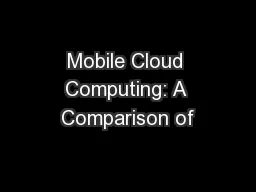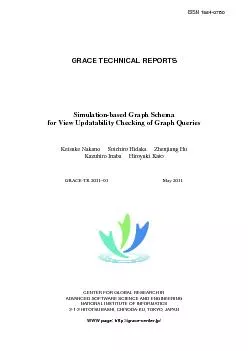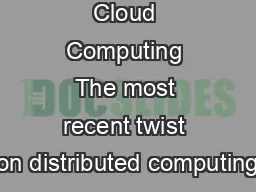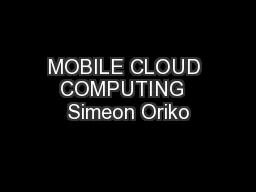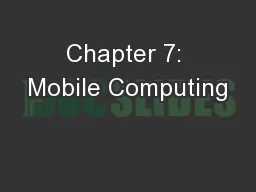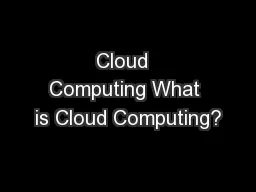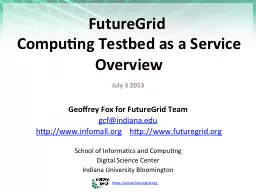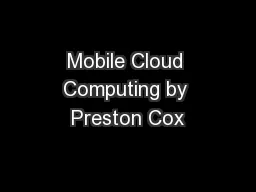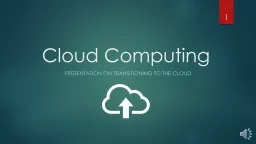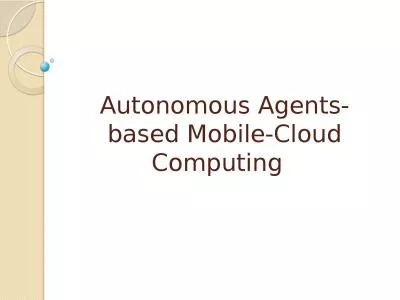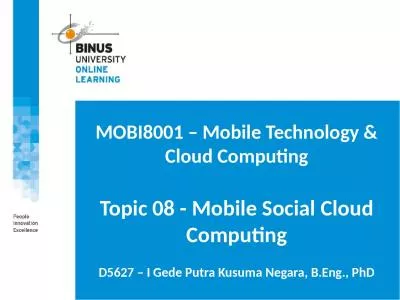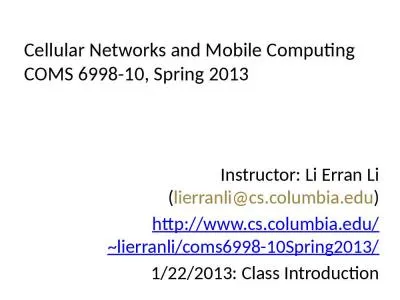PPT-Distributed Mobile Cloud Computing with Avatars
Author : likets | Published Date : 2020-06-22
Cristian Borcea Department of Computer Science New Jersey Institute of Technology Mobile Distributed Apps Assisted by Cloud Enable direct collaboration among mobile
Presentation Embed Code
Download Presentation
Download Presentation The PPT/PDF document "Distributed Mobile Cloud Computing with ..." is the property of its rightful owner. Permission is granted to download and print the materials on this website for personal, non-commercial use only, and to display it on your personal computer provided you do not modify the materials and that you retain all copyright notices contained in the materials. By downloading content from our website, you accept the terms of this agreement.
Distributed Mobile Cloud Computing with Avatars: Transcript
Download Rules Of Document
"Distributed Mobile Cloud Computing with Avatars"The content belongs to its owner. You may download and print it for personal use, without modification, and keep all copyright notices. By downloading, you agree to these terms.
Related Documents

